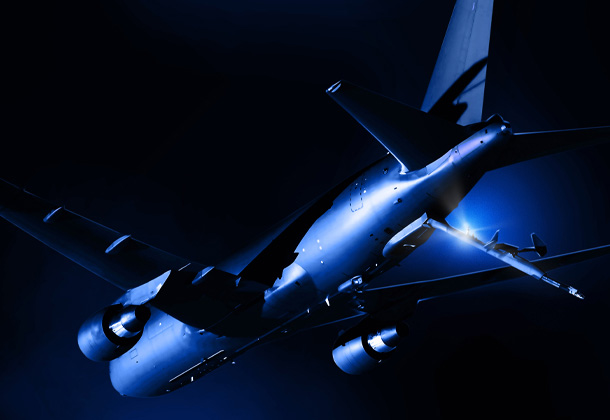Built to meet the requirements of the U.S. Air Force and allies for the full spectrum of missions, the combat-ready KC-46 Pegasus air refueling plane delivers proven multi-mission capabilities today, and evolves to meet the needs of tomorrow.
KC-46A Pegasus: The World's Most Advanced Multi-Mission Aerial Refueling Aircraft
On a mission: Meet the people who build the KC-46A
We’re building the only multi-mission tanker that’s produced in America for the U.S. Air Force and allies. A team that’s 37,000 employees and suppliers strong, with the ingenuity and tenacity to support those who serve around the world. Because refueling, connecting and protecting are missions that must be accomplished.
#KC46 tanker today
KC-46 Stories: Built in America, Operating around the world
Operating globally
The KC-46A tanker is approved by the U.S. Air Force for global deployments, including combat operations. With more in service globally than any tanker except the Boeing-built KC-135, the KC-46A is delivering fuel, data and multi-mission capability for the U.S. and allies around the globe.
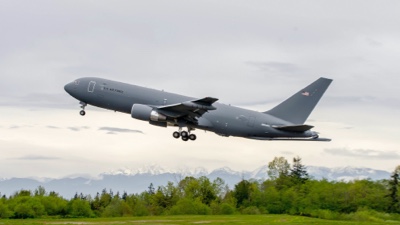
U.S.: 94 tankers
To date, Boeing has delivered 94 KC-46A tankers to the U.S. Air Force.
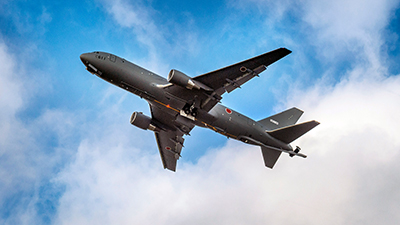
Japan: 4 tankers
Boeing has delivered four KC-46A tankers to Japan, of the six on contract.

Israel: 4 tankers on contract
Currently, four KC-46A tankers are on contract to be delivered to Israel.
Air refueling for the full spectrum of missions
The KC-46A delivers more fuel at all ranges and from shorter runways than the KC-135 aircraft it’s replacing — while utilizing less ramp space than competing tankers — ensuring mission reach from forward and austere airfields.
Currently, KC-46A air refueling receiver certifications include: AV-8B, B-1, B-2, B-52, C-5, C-17, C-130, C-135, CV-22, E-3, E-8, EA-18, F-15, F-16, F/A-18, F-22, F-35, KC-10, KC-46, KC-135, P-8A and V-22.
Unlike many existing tankers, the KC-46A can also receive fuel, which significantly extends the range and flexibility of global mobility and power projection maneuvers.
The combat-readiness and agile-combat-capable design of the KC-46A enables more booms in the air throughout the operational theater, making it the ideal aircraft for refueling missions.
3X larger receiver envelope
The KC-46A boom provides a receiver envelope three times larger than the KC-135.
212,000 lbs
The KC-46A’s 212,000 pounds (96,162 kilograms) of fuel capacity enables the full spectrum of refueling missions.
100M+ lbs
The proven KC-46A has offloaded more than 100 million pounds (45 million kilograms) of fuel to receivers globally.
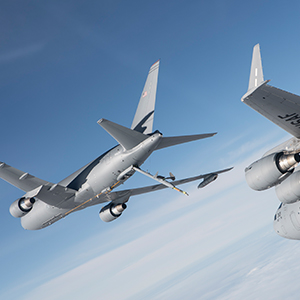
Connects and protects the fleet

The KC-46A has already been described as “game changer” for its ability to exchange data and provide fleet situational awareness at the tactical edge.
Armed with data links and Advanced Battle Management System (ABMS) integration, the Pegasus tanker connects multi-domain warfighters, providing tactical situational awareness and real-time information superiority.
As the needs of the mission evolve, the KC-46A can efficiently integrate new capabilities and advanced technology thanks to its in-line production. The Air Force and Boeing are investing in a Block 1 upgrade of additional advanced communications capabilities to further enhance the Pegasus’s data connectivity and situational awareness.
The combat-ready KC-46A features layers of defensive countermeasures to detect, avoid, defeat and survive threats.
Combat ready
Defensive countermeasures strengthen ability to deliver fuel and data at the tactical edge.
Battlespace awareness
The KC-46A provides unmatched tactical situational awareness to the crew and relays real-time data to the fleet.
Unparalleled protection
Nuclear, chemical and biological hardening and flight deck armor provide added protection.
Serves the highest-priority air-to-air refueling missions
The KC-46A is the only tanker to meet the stringent Federal Aviation Administration and U.S. Air Force airworthiness and performance requirements. The KC-46A is approved by the U.S. Air Force for all global mission deployments, including combat operations.
In addition, the proven boom and hose-and-drogue systems are capable of refueling all U.S., allied and coalition aircraft compatible with international aerial refueling procedures.
With its track record of success, the KC-46A is proven for today’s missions and demonstrating next-generation aerial refueling system capabilities.
Proven and operational now
The KC-46A provides interoperable capability to U.S. and allied forces and international partners.
More booms in the air
Four KC-46A tankers can be used for the same operating cost of three larger refuelers, meaning more booms in the air and more fuel where it’s needed.
Fueling the joint force
Every month, the KC-46A flies more hundreds of sorties and offloads more than five million pounds (22.7 million kilograms) of fuel to receivers globally.

Adapts for rapid mobility

The KC-46A can convert between cargo, passenger and aeromedical evacuation modes in just two hours — with emergency oxygen and electrical power for medevac support included — and is compatible with all U.S. Air Force loaders.
With a large cargo door and cargo rollers, the KC-46A is adaptable to rapid cargo loading and mission versatility for Agile Combat Employment.
When compared to the KC-135 it holds:
3X more pallets
The KC-46A holds as many pallets as a C-17.
2X more passengers
With ample room for passengers, the KC-46A can hold twice as many people as the KC-135.
30% more medevac capacity
The KC-46A can hold 30% more patients than the KC-135.
Delivers life-cycle value
Built as a combat-ready tanker from day one of production, the KC-46A has a longer lifespan and a reduction in the airframe corrosion that can occur in post-production modification. Furthermore, fleet commonality and interoperability leverages economy of scale for the U.S. Air Force and allies.
The operating cost of four KC-46A tankers is the same as just three larger refuelers, so operators can have more booms in the air and bring more fuel to the fight.
Supported by a robust KC-46 supply chain that includes more than 650 American businesses and 37,000 American workers throughout more than 40 U.S. states, the current production line in Everett, WA, is delivering mission-ready aircraft today.
Ultimately, the in-production KC-46A has lower acquisition, operations and sustainment costs than any existing widebody aerial refueler and represents the best value over its total lifecycle.
6 U.S. Air Force bases
The KC-46A serves at six U.S. Air Force main operating bases.
40+ U.S. states
The KC-46 supply chain includes 40+ U.S. states.
Interoperability
With 168 on contract and 98 delivered or in service globally, the KC-46 offers unrivaled interoperability for mission success.

Next Generation Aerial Refueling System Capabilities
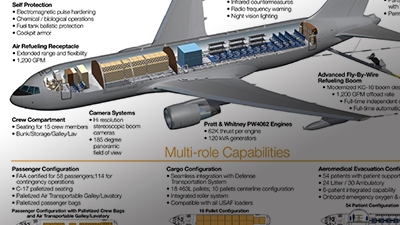
Technical specifications
Learn more about the technical specifications of the KC-46A.
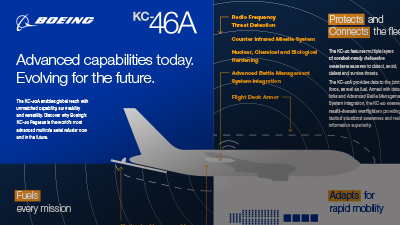
Capabilities overview
Discover the capabilities of the KC-46A, the world’s most advanced multi-mission aerial refueler.
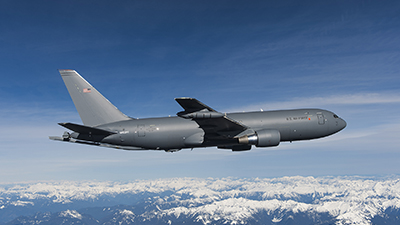
Multi-layered protection
Electromagnetic pulse (EMP), chemical and biological hardening, along with armoring and countermeasures, provide unparalleled combat readiness on the KC-46A.
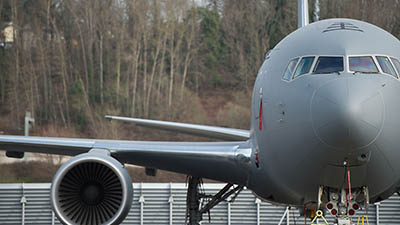
Spacious crew compartment
The KC-46A contains enough space for 15 crew members, bunks, storage, a galley and a lavatory.

Superior situational awareness
Large Boeing 787-style 15-inch displays allow pilots to quickly optimize flight parameters for critical decision-making and mission success.
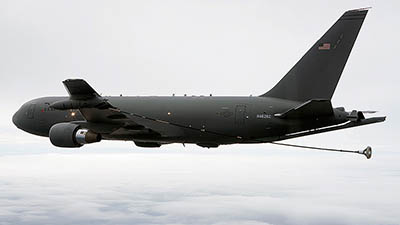
Delivers data
Certified and flight-test-proven Wing Air Refueling Pods integrate Advanced Battle Management System (ABMS) capability to make the KC-46A fleet a “connectivity hotspot” at the tactical edge.
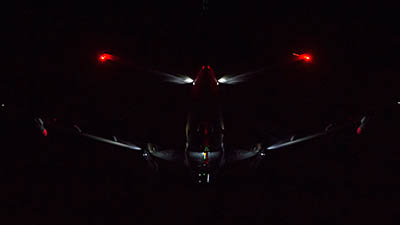
State-of-the-art defensive systems
Infrared countermeasures, radio frequency warning and night vision lighting for covert operations give the aircraft the defensive edge.
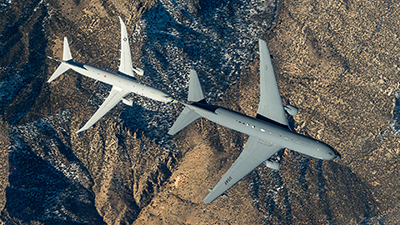
Enhanced refueling capability
The KC-46A boasts a fly-by-wire boom with independent disconnect and automatic load alleviation as well as both centerline and wing-mounted hose and drogue systems.
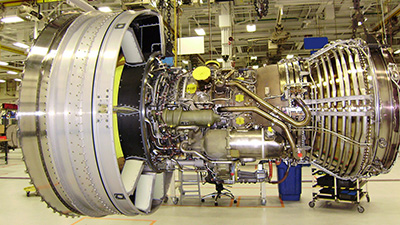
Proven powerful platform
Based on the 767 freighter, and paired with Pratt and Whitney PW4062 Engines with 62K thrust per engine and 120 kVA generations, the KC-46A is both powerful and fuel efficient.

Higher utilization
Onboard aircraft health diagnostic systems provide real-time health monitoring and improve operational availability and mission capability.
KC-46 Specifications
| Width | 156 ft 1 in (47.5 m) | Length | 165 ft 10 in (50.5 m) |
| Height | 52 ft 10 in (16.1 m) | Engines | Two Pratt & Whitney PW 4062 with 62,000 lbf (289.13 kN) thrust |
| Maximum Takeoff Weight | 415,000 lbs (188,241 kg) | Maximum Landing Weight | 310,000 lbs (140,614 kg) |
| Fuel Capacity | 212,299 lbs (96,265 kg) | Maximum Air Speed | 0.86 Mach (650 mph) |
See the Pegasus soar
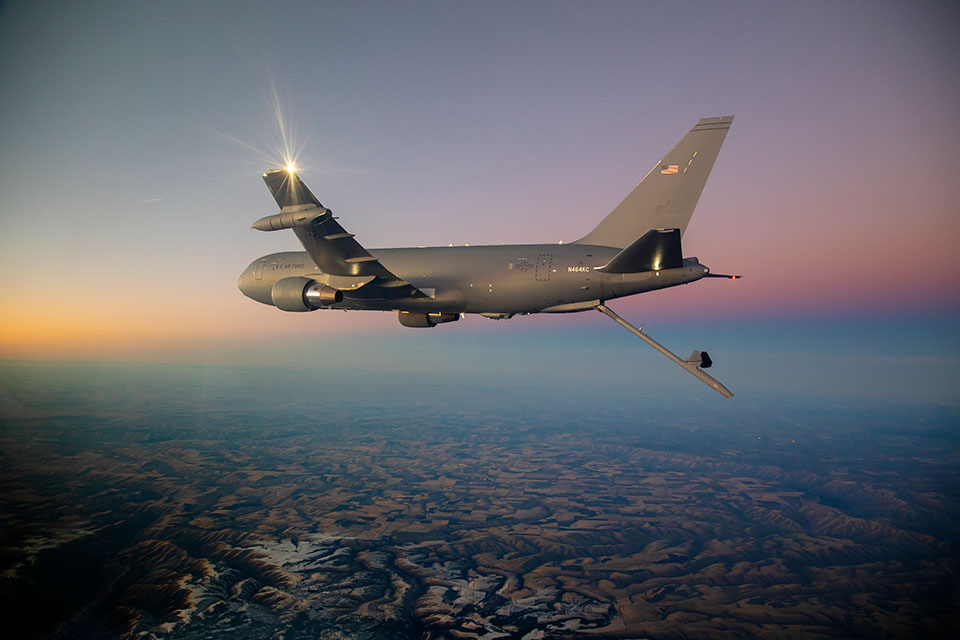
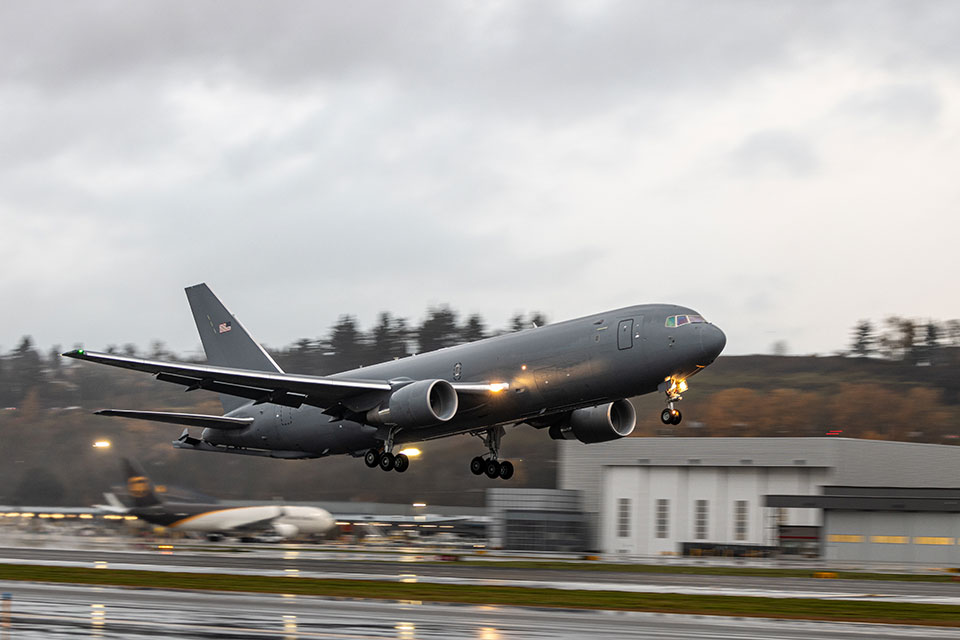

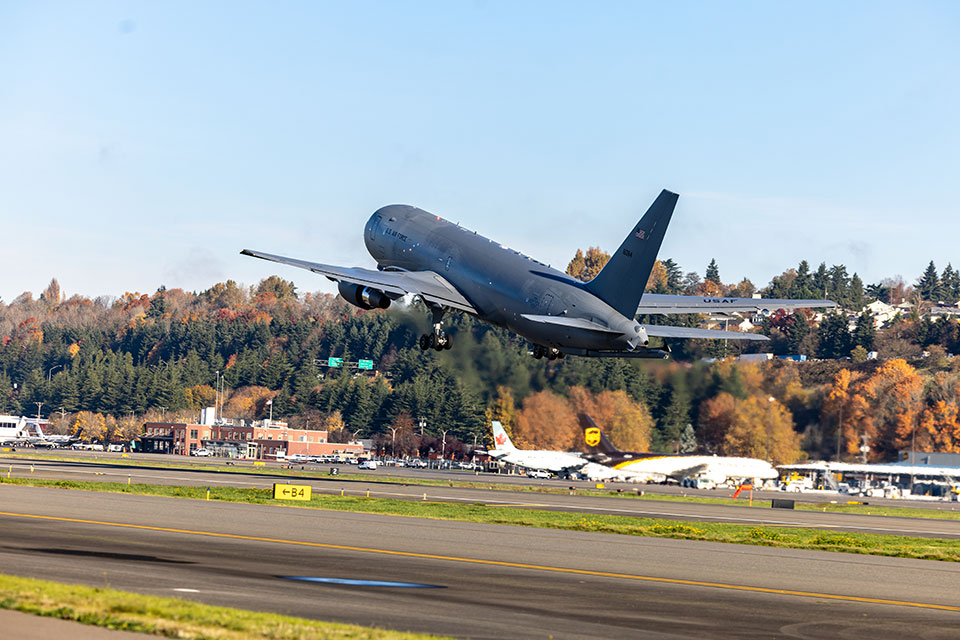
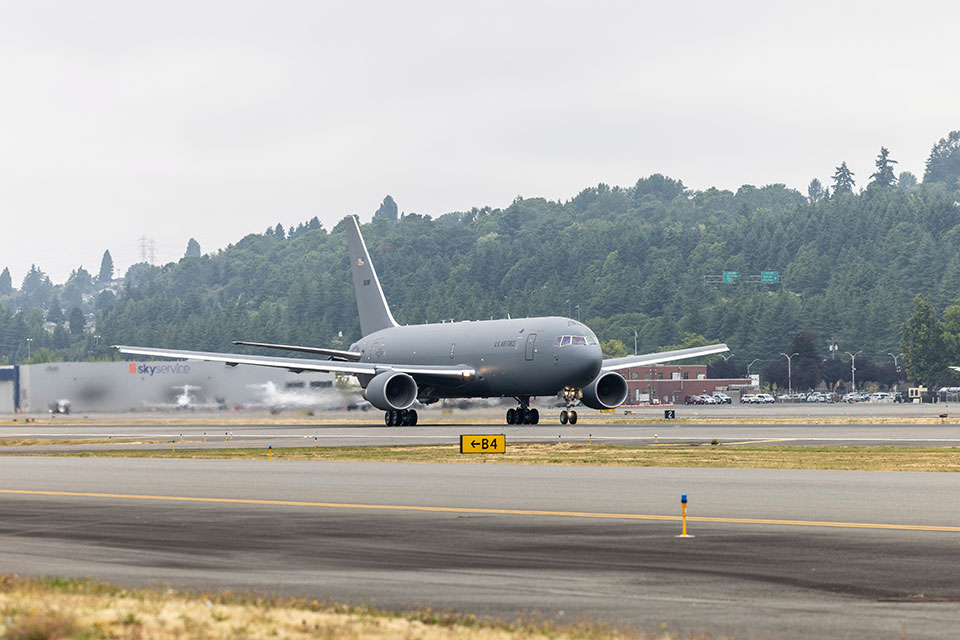
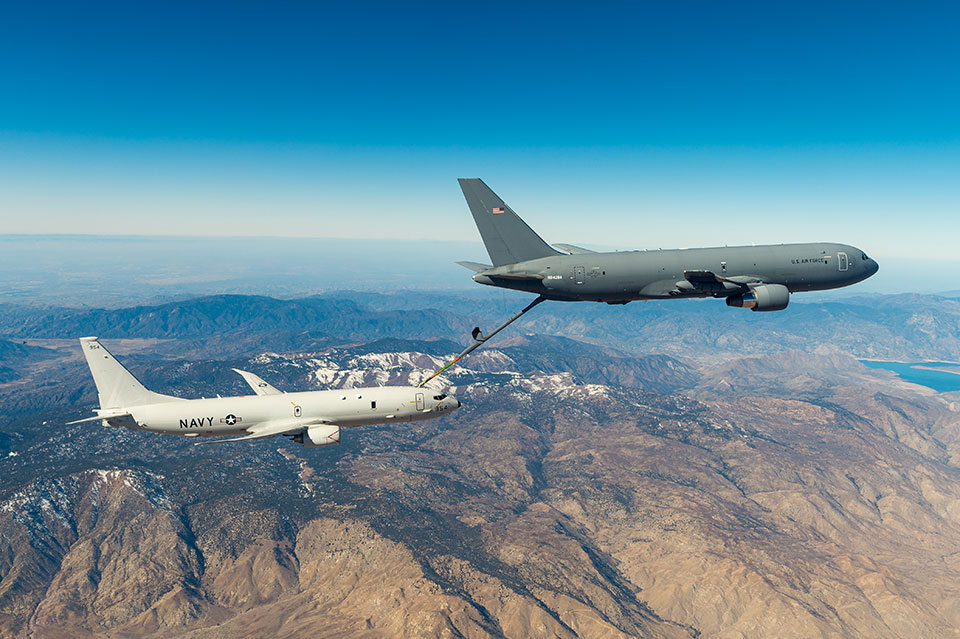
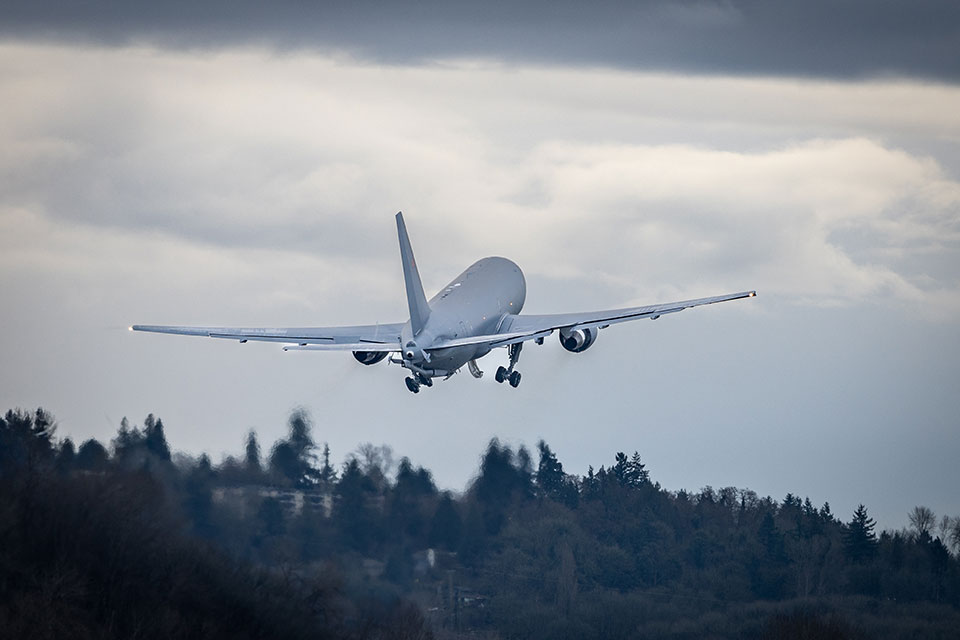
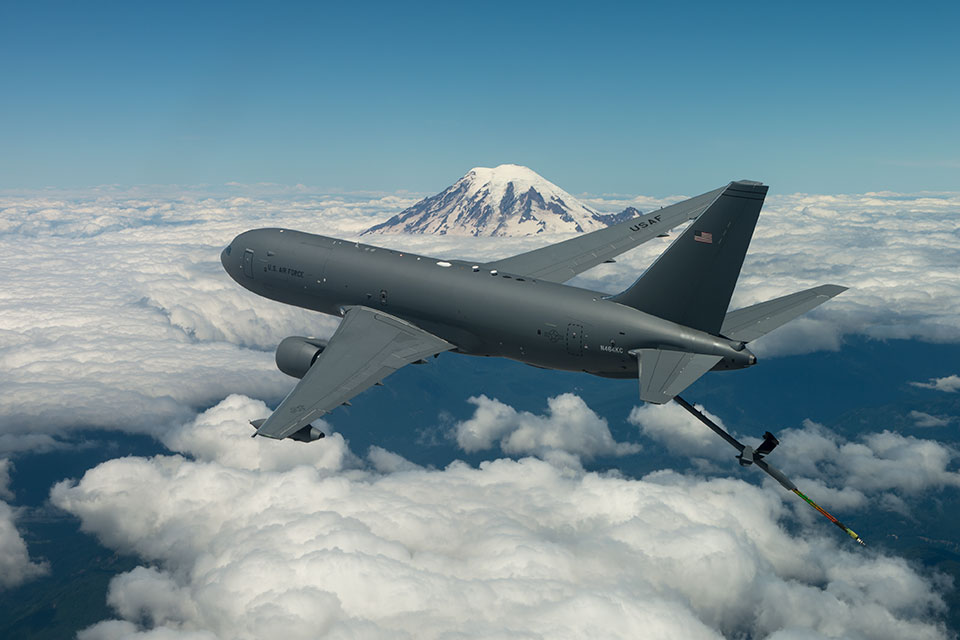
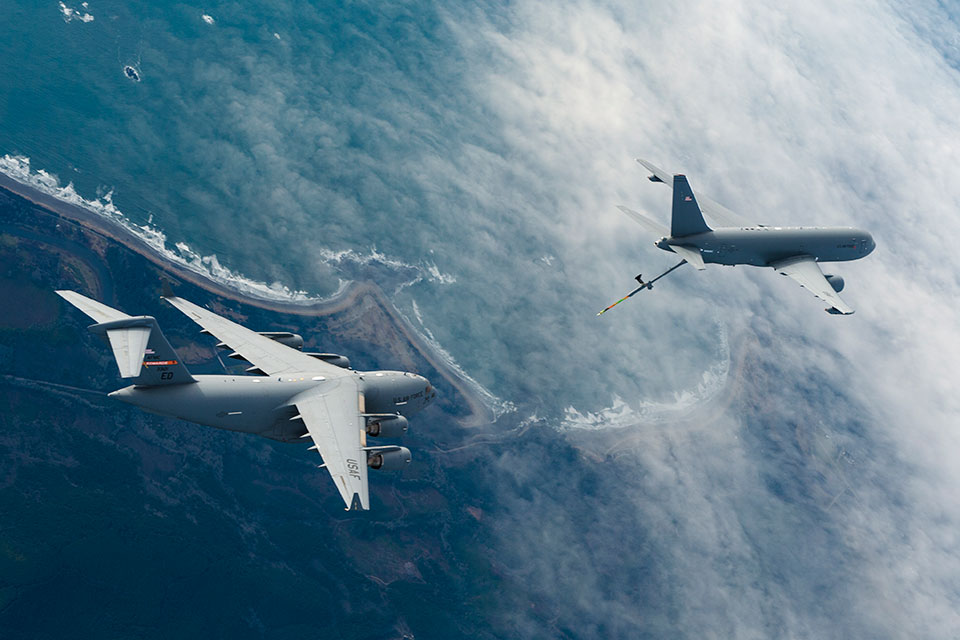
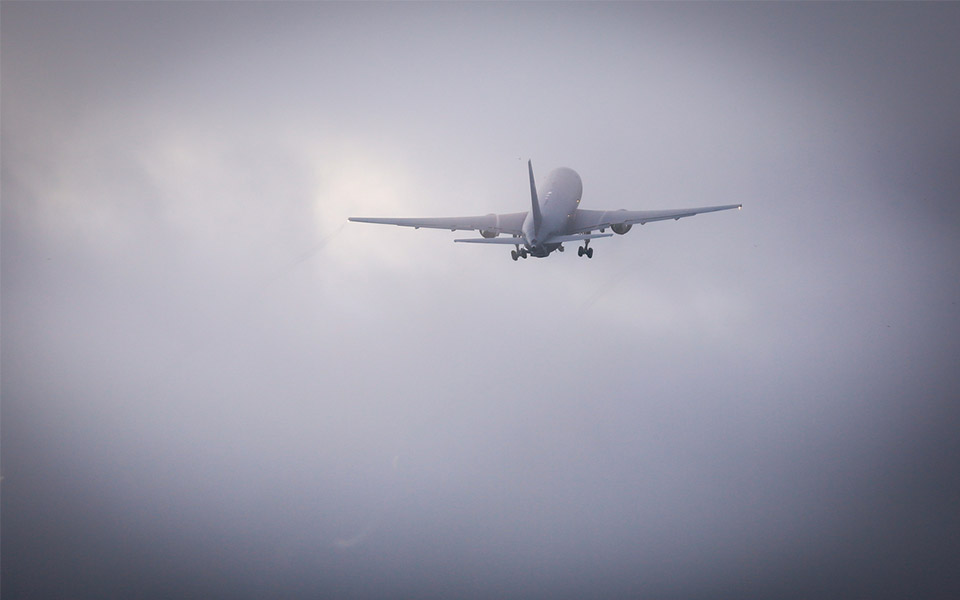
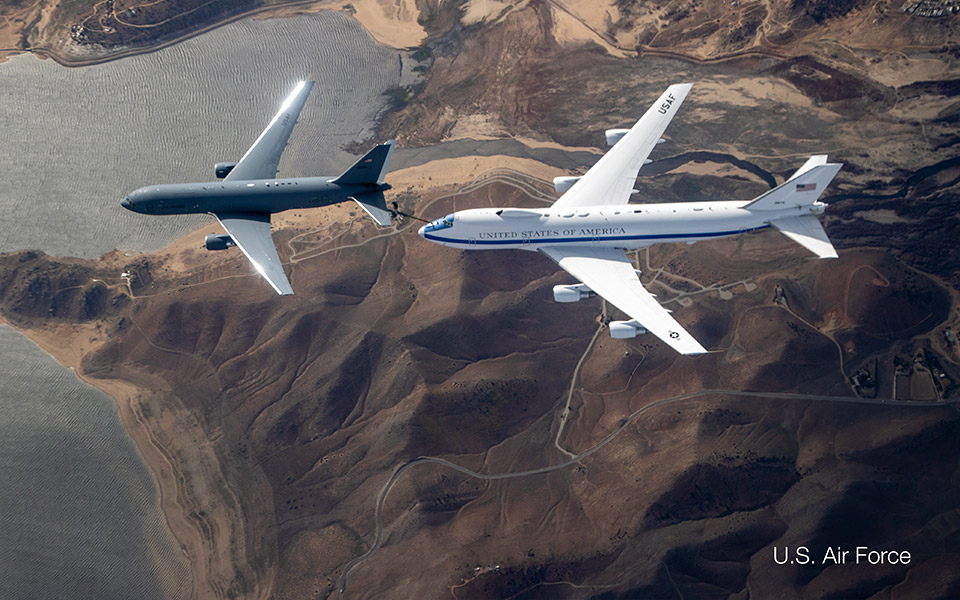
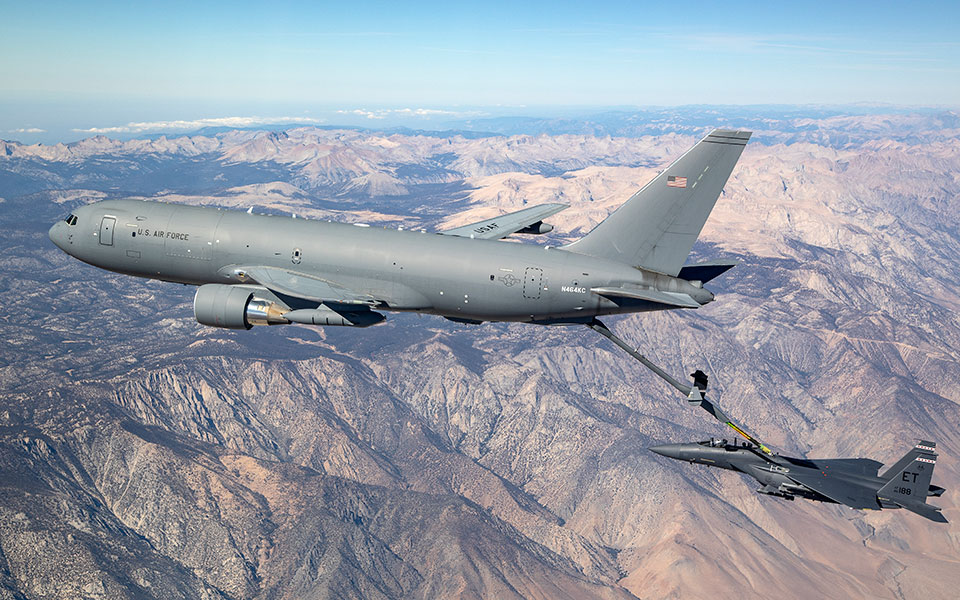
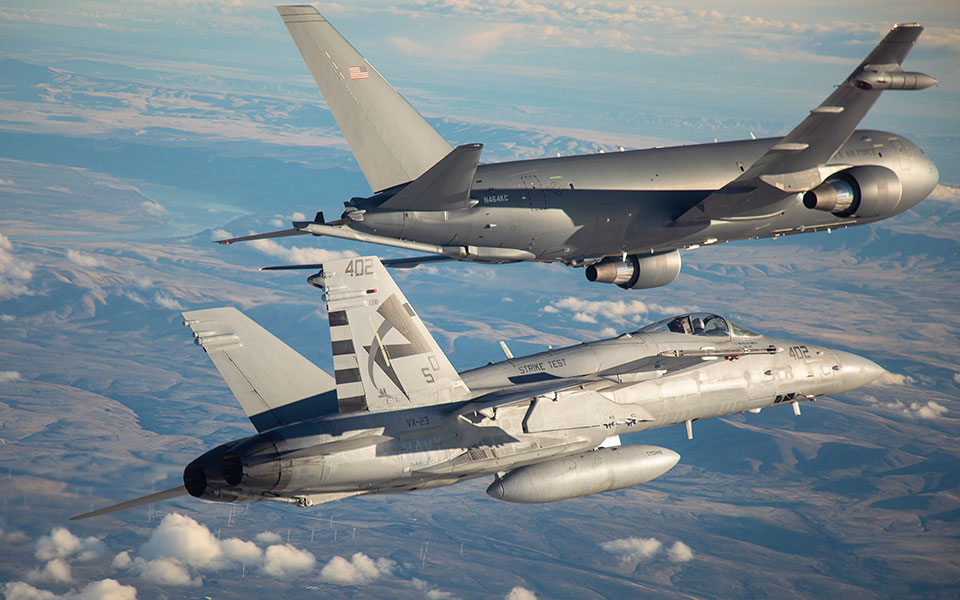
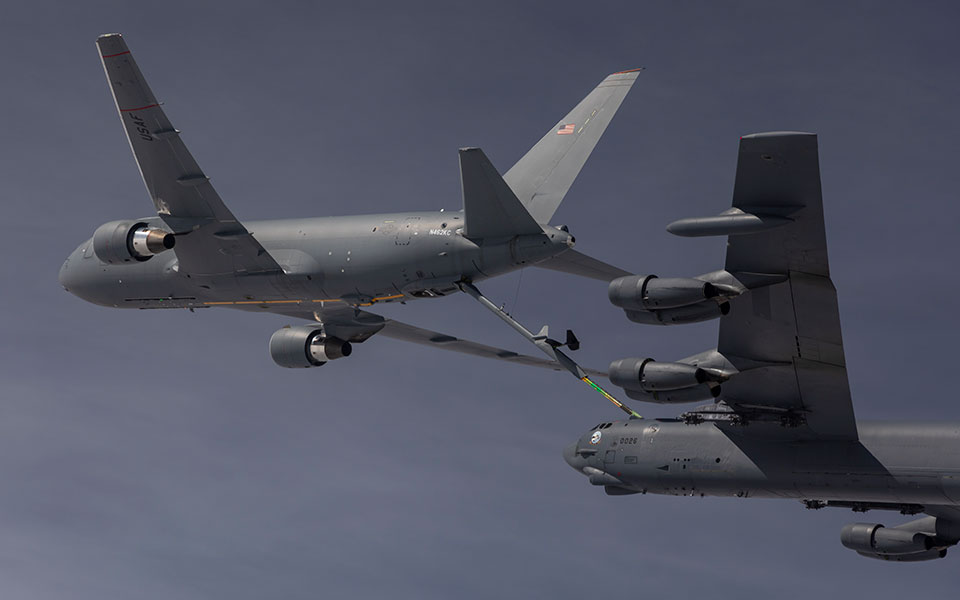
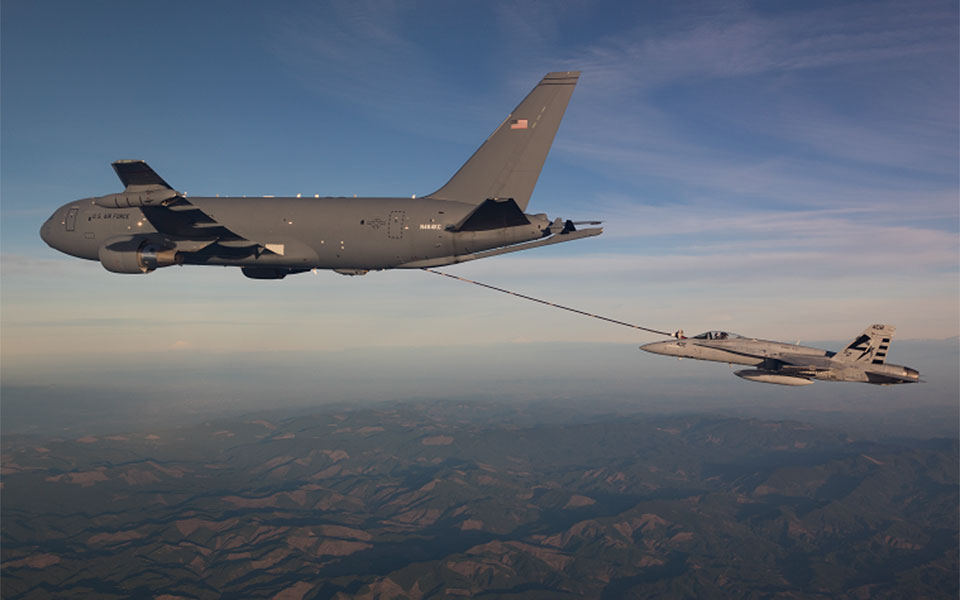
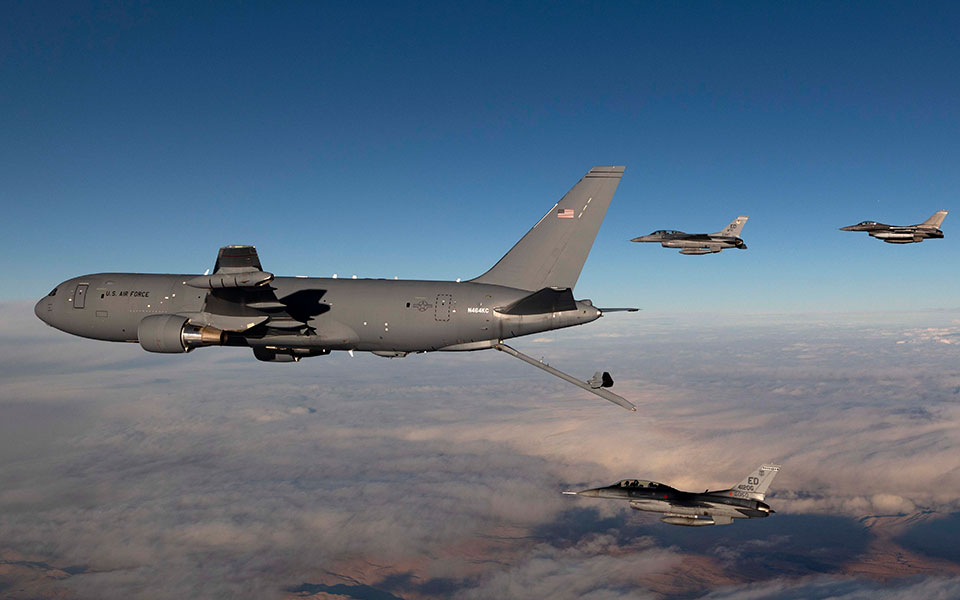
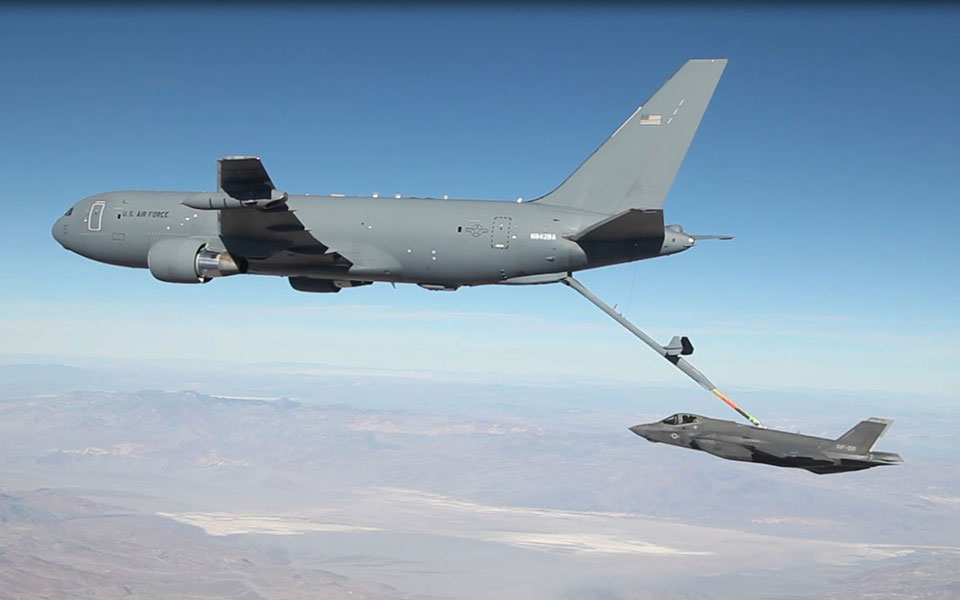
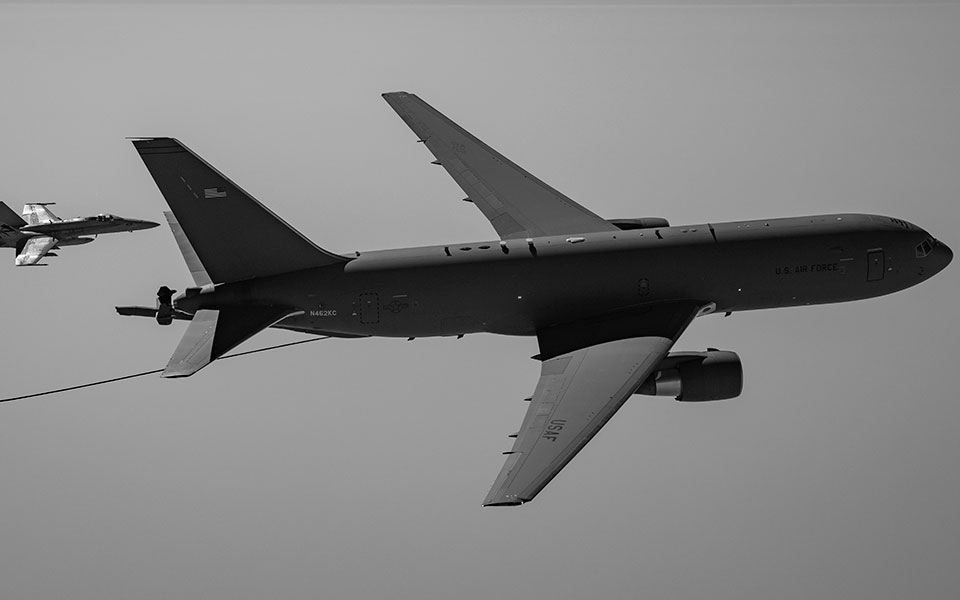
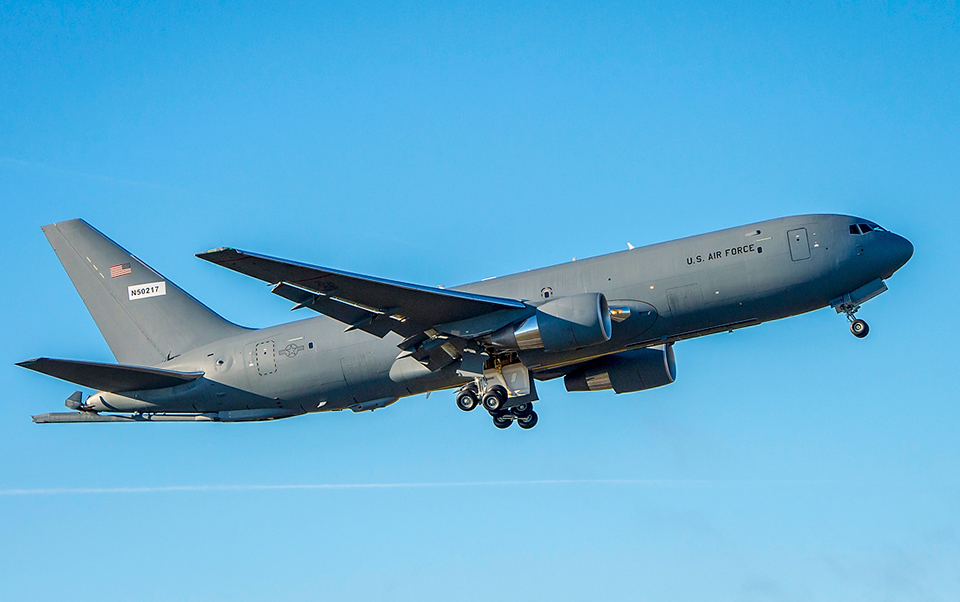
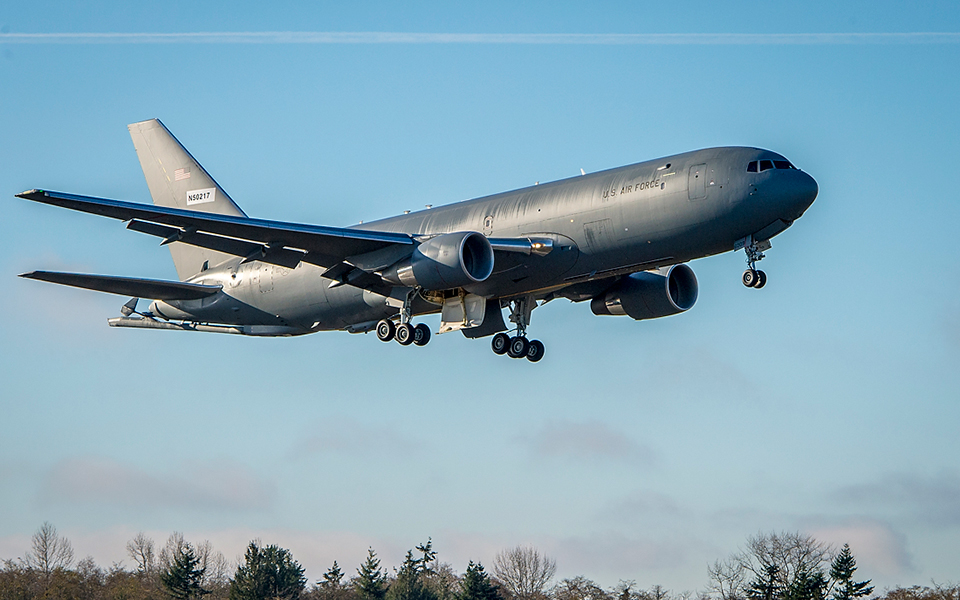
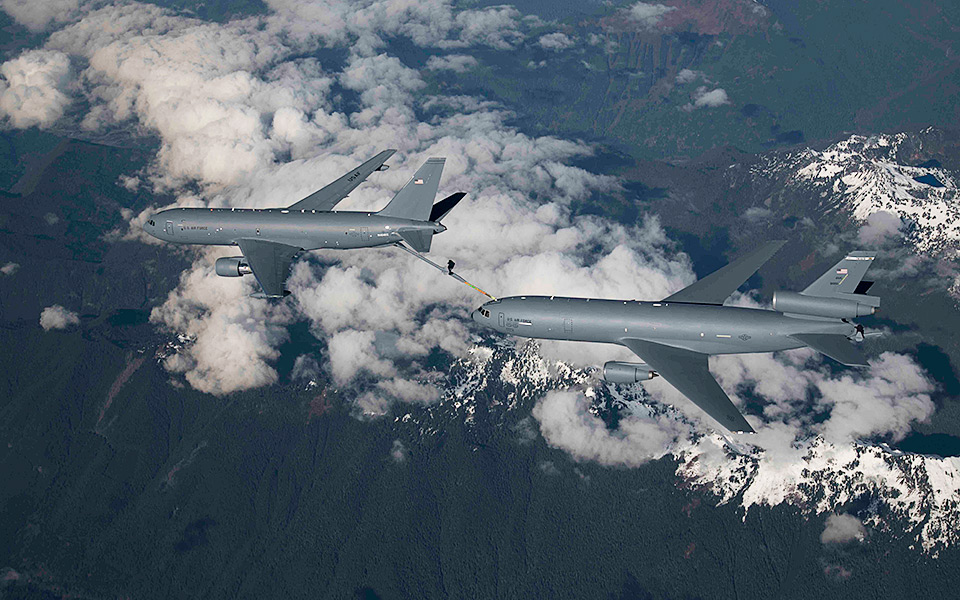
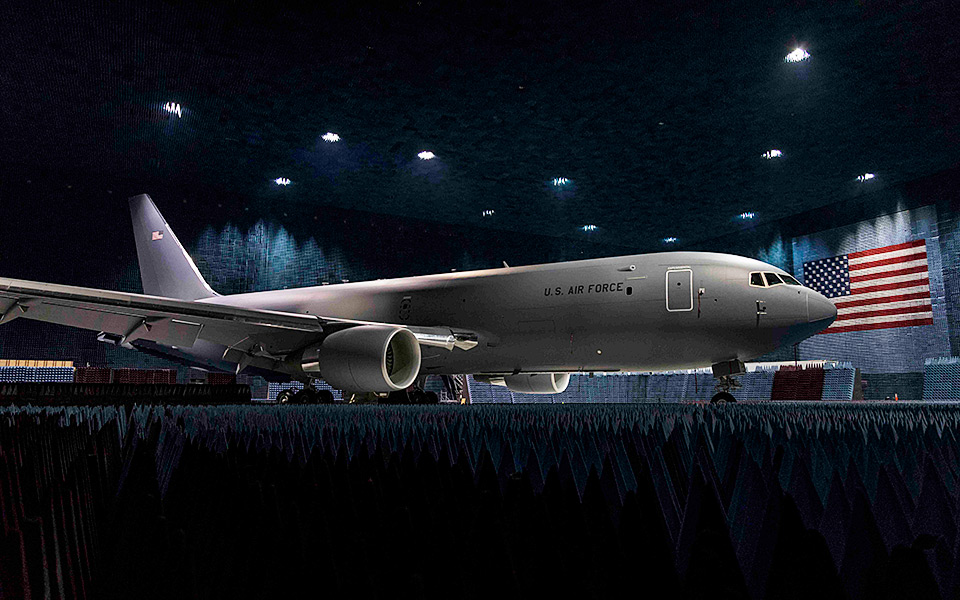
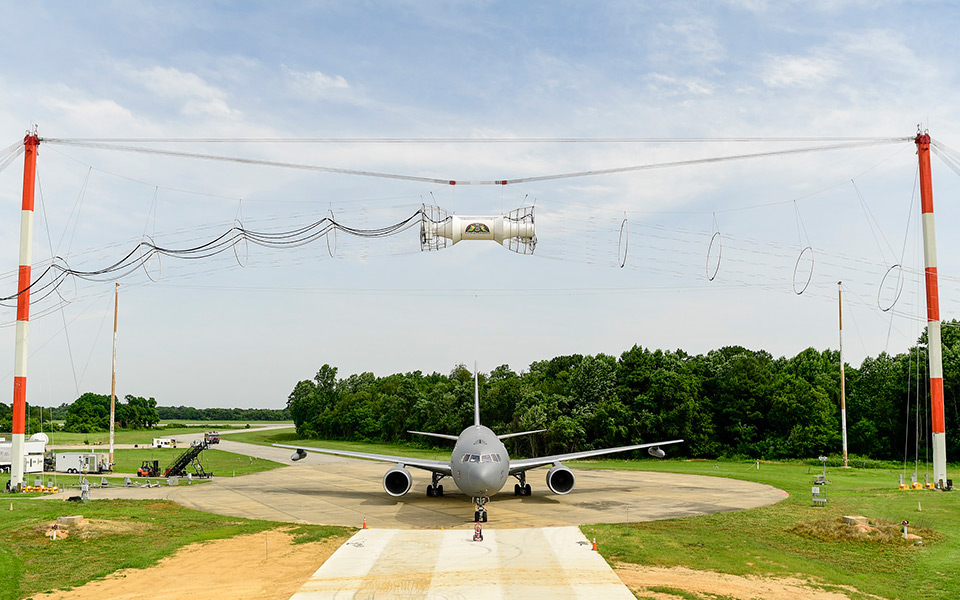
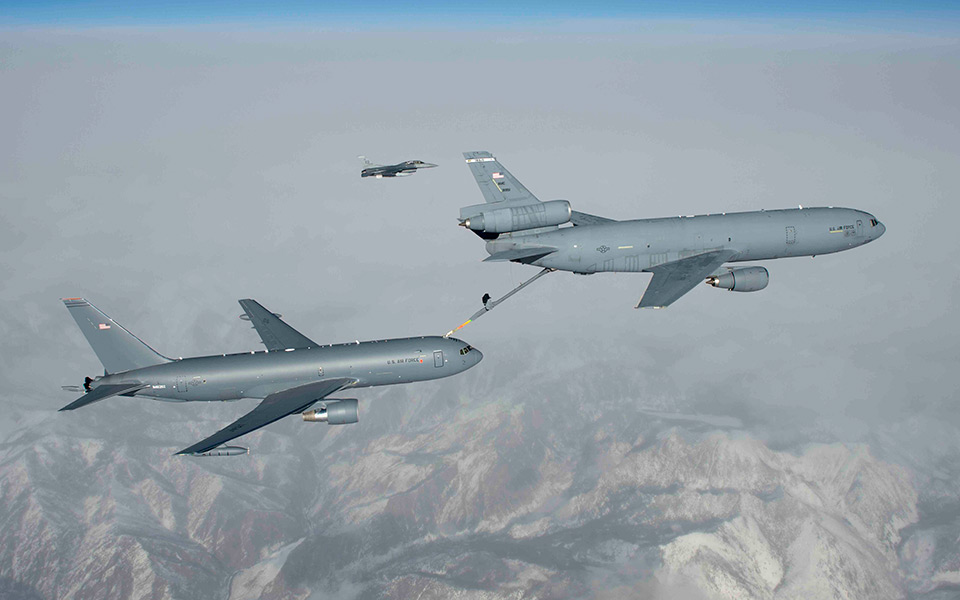
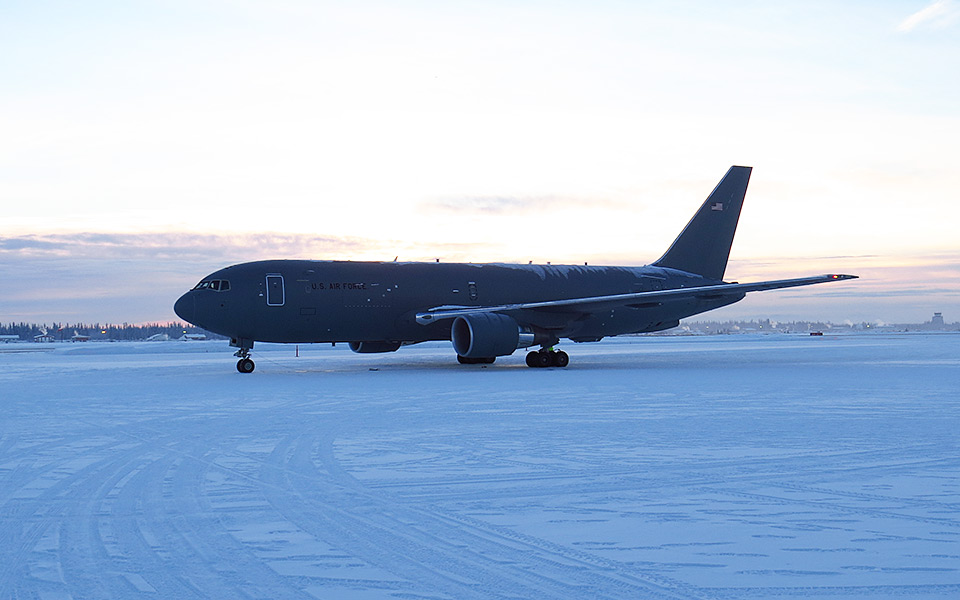
- Image 1 0224
- Image 2 0224
- Image 3 0224
- Image 4 0224
- Image 5 0224
- Image 7 0224
- Image 8 0224
- Image 9 0224
- Image 10 224
- Image 1
- Image 2
- Image 3
- Image 4
- Image 5
- Image 6
- Image 7
- Image 8
- Image 9
- Image 10
- Image 11
- Image 12
- Image 13
- Image 14
- Image 15
- Image 16

